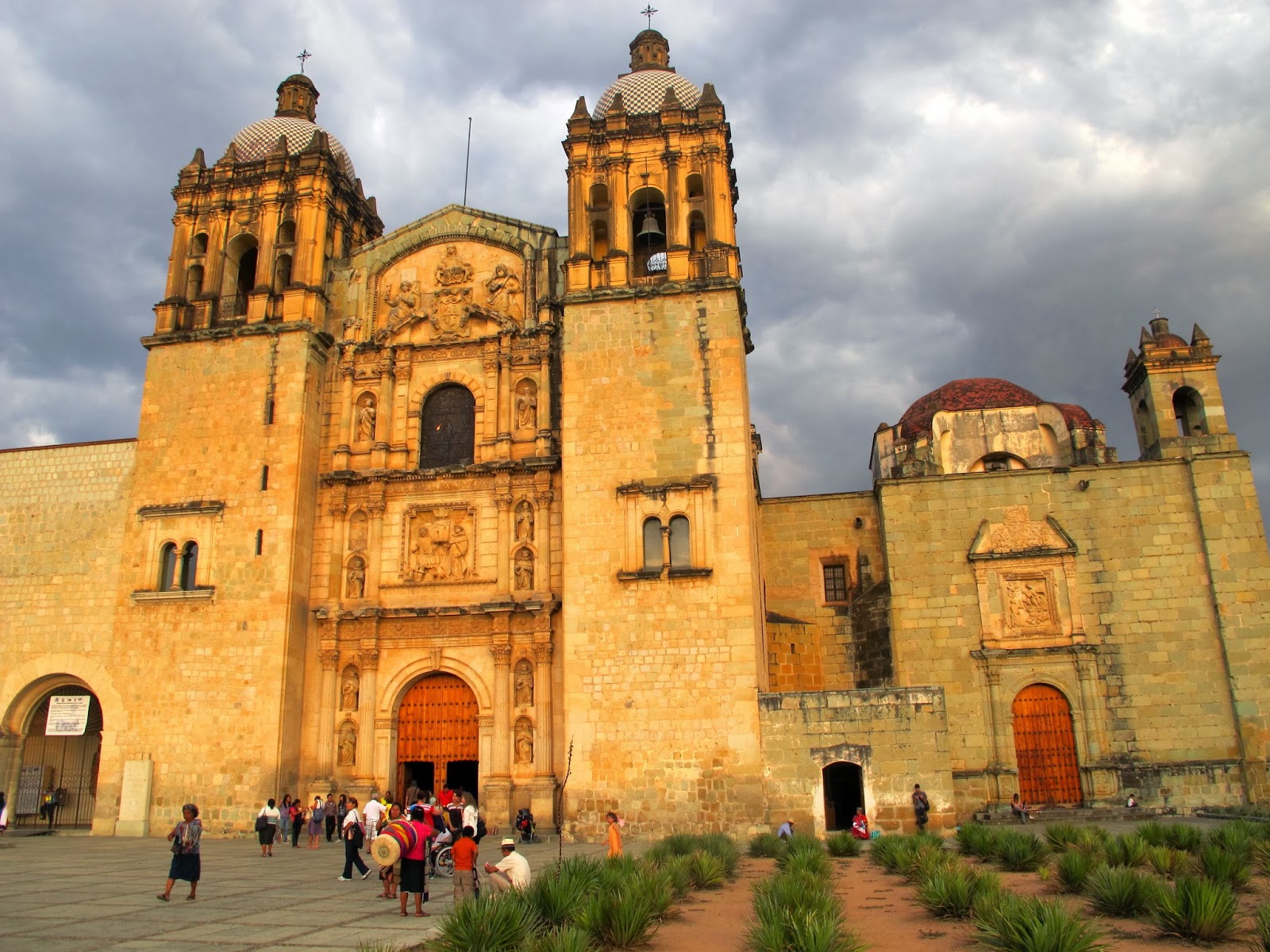It is a beautiful structure, especially when the stonework takes on an amber glow with the setting sun.
The new world Baroque facade features many stone carved statues.
The side of the church shows how massive this church actually is.
The twin tile domes are impressive.
The structured facade certainly does not prepare you for what the interior has to offer. Much of the interior had been vandalized and destroyed when the church was converted into stables during the War of Independence and later army barracks in the mid-19th century. When the church was returned to the Dominican order, the church was restored to its original beauty by 1976. The main naive of the church is almost 230 feet long.
I shot this photo when I was in Oaxaca with one of my groups. There is my great guide, Victor, filling us in on the interior of the church.
Adorning the ceiling (the underchoir) as you enter, you will see some of the earliest works of art, the genealogy of Saint Dominic. Based on the medieval motif of the Tree of Jesse, this grapevine branches out with Don Felix de Guzman at the base (the patriarch of the family and the founder of the Dominican order). The Virgin was added later on at the top of the grapevine tree.
All the surfaces in the church are encrusted with ornament. A wonderful example of baroque stucco work. Saints and martyrs of the Order diminish in size as they ascend towards the the dove of the holy spirit.
Looking up into the choir with the Virgin in the center amid the gilded vines and foliage.
The decadent gilded main altar was reconstructed from examples of other altars in the region, mainly from the main retablo at Yanhuitlan. The twisted baroque Solomonic columns and scalloped niches provide a beautiful setting for the painting and statues. The Santo Domingo Church truly is an experience not to be missed.
As Octavio Paz, the great Mexican writer wrote, "The age-old Mexican pre-occupation with elaborate outward forms as a device to mask and yet express profound inner feelings and an innate sense of order predates the Spanish conquest, and remains and enduring characteristic of Mexican life and society."










No comments:
Post a Comment